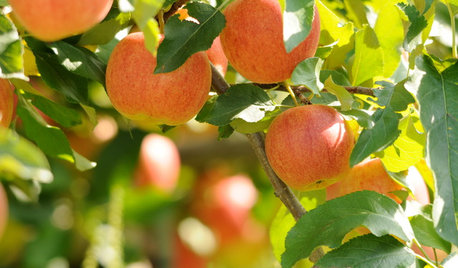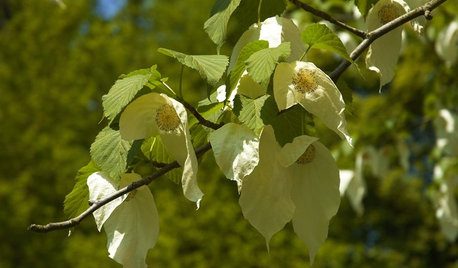Grafting fruit trees
Lurcher
11 years ago
Related Stories

GARDENING AND LANDSCAPINGCrazy for Fruit Trees
Whether a single citrus or a mini apple orchard, even the smallest landscape space can bear deliriously delicious fruit
Full Story
EDIBLE GARDENSHow to Grow 10 Favorite Fruit Trees at Home
Plant a mini orchard in fall, winter or early spring to enjoy fresh-off-the-tree fruit the following year
Full Story
FARM YOUR YARDIf You Have Room for Only One Fruit Tree ...
Juice up a small garden with one of these easier-care or worth-the-effort fruit trees for a mild climate
Full Story
TREESHow to Plant a Fruit Tree
Great Home Project: Choose the best tree for your region, plant it to thrive and enjoy sweet rewards year after year
Full Story
WINTER GARDENINGHow to Prune Your Fruit Trees in Winter
Garden chores may slow down this season, but pruning your fruit trees now means healthier plants that will produce more
Full Story
GARDENING GUIDESGreat Design Tree: The Dove Tree
With distinctive fluttery flowers and a height that towers over the landscape, the dove tree provides a respite from the summer sun
Full Story
GARDENING GUIDESTree Care: Common Tree Diseases and What to Do About Them
Learn to recognize trees that may be affected by diseases or pests so you can quickly take action
Full Story
EDIBLE GARDENSGrow Plum Hybrids for Your Favorite Fruit Flavors
Plums are cozying up with apricots, peaches and even cherries — here’s how to grow these hybrids for the best aspects of each
Full Story
EDIBLE GARDENSHow to Add an Apple Tree to Your Edible Garden
Readily available, beautiful and fragrant, apple trees offer four-season interest along with crisp, juicy fruit
Full Story
GARDENING GUIDESHow to Keep Your Citrus Trees Well Fed and Healthy
Ripe for some citrus fertilizer know-how? This mini guide will help your lemon, orange and grapefruit trees flourish
Full Story








quillfred
LurcherOriginal Author
Related Professionals
Hershey Landscape Architects & Landscape Designers · Mitchellville Landscape Architects & Landscape Designers · Norton Shores Landscape Architects & Landscape Designers · Allentown Landscape Contractors · Fairfield Landscape Contractors · Fishers Landscape Contractors · Fort Mill Landscape Contractors · Hannibal Landscape Contractors · Manhattan Landscape Contractors · Milford Mill Landscape Contractors · Norristown Landscape Contractors · Rosemount Landscape Contractors · Selden Landscape Contractors · Thonotosassa Landscape Contractors · Wanaque Landscape ContractorsLurcherOriginal Author
myk1
LurcherOriginal Author
Scott F Smith
LurcherOriginal Author
canadianplant
Scott F Smith
LurcherOriginal Author
myk1
LurcherOriginal Author
bruce2288
quillfred
olpea
LurcherOriginal Author
LurcherOriginal Author
Scott F Smith
LurcherOriginal Author
quillfred
Konrad___far_north
LurcherOriginal Author